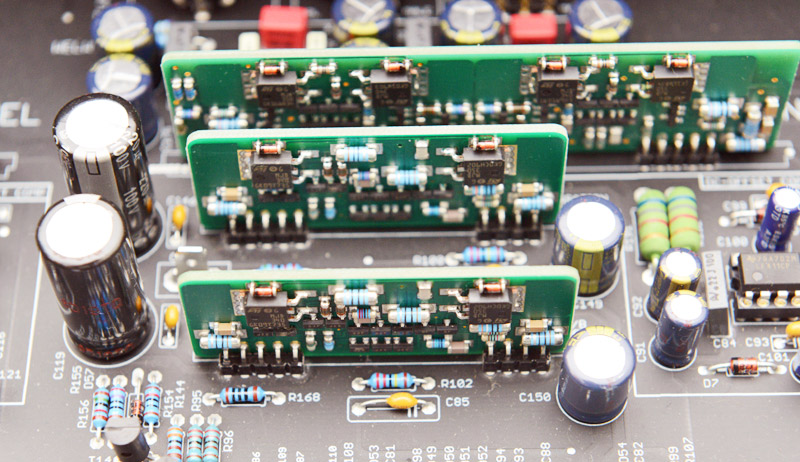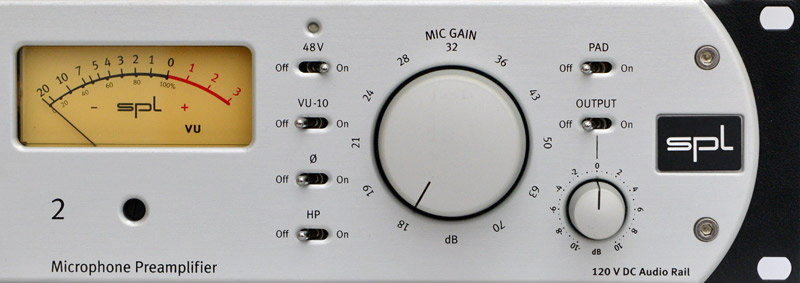SPL Crecendo Duo
Author Andrew Levine | Photos: Peter Kaminski, Andrew Levine (1)
In 2018 I had the opportunity to be the first user of the SPL Crescendo (serial number #1), an eight channel microphone preamplifier based on SPL'S 120V-technology. Now I got the chance to get my hands on the first production model two channel Crescendo Duo and take it out for a spin.
Concept
The idea behind the 120V-technology is to amplify the sound with the highest fidelity technically possible. SPL's specially developed SUPRA-amplifier modules run on twice the voltage of state of the art discrete operational amplifiers and four times that of IC-based semiconductor opamps. The maximized working voltage results in an increase in dynamic range, signal to noise ratio and overload protection. Even the finest details of sonically challenging projects are preserved with ease.
Let us first have a look at the well engineered interior. The layout is uncluttered to say the least. The right hand side of the newly designed mainboard houses the overspec'd power supply while all Input/Output channels are located on the left. I had expected to see two separately slotted boards for the two channels, similar to the eight-channel Crescendo, where the mainboard houses eight identical daughterboards. Talking with the designer Wolfgang Neumann I realized the utility of the new integrated solution. It ain't easy but quality always comes first for SPL.
Another one of my questions pertains to why the power supply's transformer is not housed behind a mu-metail shield like the big sister's. On the one hand the transformer is itself shielded and on the other it is sufficiently distanced from the input and output section that is most susceptible to electromagnetic interference. The toroidal transformer is mounted vertically purely to save spac
The two smaller boards mounted consecutively are the two SUPRA opamps. A larger board right behind houses the elaborately confectioned circuit responsible for electrically balancing the symmetrical signal.
The rear of the enclosure sports an IEC socket, on/off-switch, one XLR input per channel plus two parallel line-level XLR outputs. Very useful for backup purposes. Input impedance is rated at ten kiloohm and output-impedance at 75 ohm. The maximal output level goes up to 32.5dBu. The phantom-power circuit suplies a whopping 35mA per channel, satisfying even the most picky contenders.
A push-button lifts the ground in case of persistent issues with ripple pickup. While unlikely in a studio setup it can be a life-saver on remote jobs. The Crescendo Duo is supplied with 19" rack ears and IEC power cord.
Usage
The SPL Crescendo Duo offers two input channels with up to 70dB of gain and two outputs per channel, the gain of which can be boosted by 10dB using the "Output"-switch independently of the input gain. This allows the user to feed optimal signal level to components further down the chain. The large rotary knob is detented, internally raising the gain by increasing amounts from +1 over +4 up to +7dB. The rotary control for output gain is stepless.
Besides the per-channel 48V phantom power there are switches to toggle signal polarity, pad the input by 20dB and enable a 100Hz low-cut filter. Input signal levels can be conveniently monitored on two large backlit VU-meters, the base level of which can be lowered by 10dB when working with high levels. An inset screw under each gauge lets the user calibrate the meter.
On the road
First things first: the Crescendo Duo is no flyweight. I had already organized a rolling rack case for the big sister, and that came in handy again. The 3U front with large size, easily viewable VU meters and large knobs probably feels more at home in the studio than on the road. Then again once you have been hooked on the sonic transparency these mic-pres afford you will sorely miss them if you don't take them along wherever there is music worthwhile recording.
My first gig with the eight channel Crescendo had tought me the utility of VU meters for level control. While very different from the ubiquitous peak metering (usually post AD) it is not only fun to use but really valuable if there are some serious levels challenging the microphones.
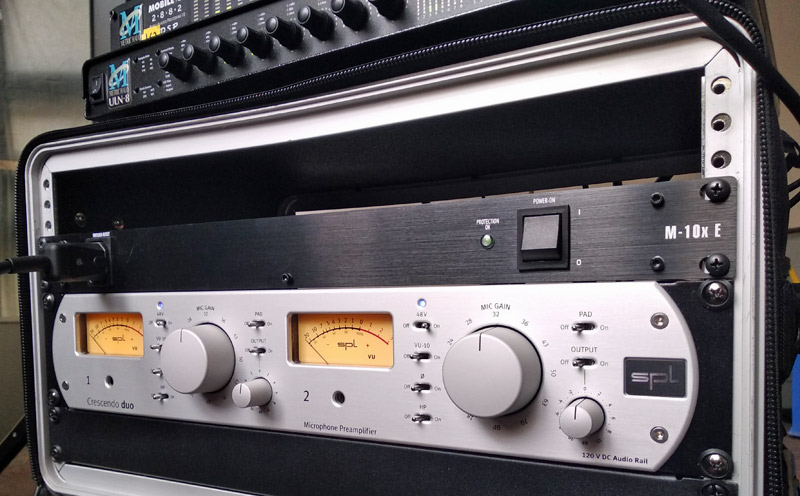
Like I said this was not my first encounter with 120V technology. The current test run for the Crescendo Duo was a set of two live streaming concerts in Berlin. "box full of waves" is my new series of duos and trios featuring freely improvised electroacoustic music. The first two installments took place at the end of April in the Berlin based club "World Wide Window".
It happens that the two events on April 28 and 29 were also the last two performances at the WWW. Next to being the engineer in charge of capturing audio and video, as well as streaming it live—way too much for one person to handle I now know—I also played Theremin/synth and Haken Audio Continuum Fingerboard. On Tuesday together with the trombone player Davide Piersanti and on Wednesday with the tuba player Jack Adler-McKean.
Miking was puristic. An AB pair of United Minorities Browny microphones, developed and handcrafted by Attila Czirja'k captured the ambient soundstage. The feed from the SPL Crescendo Duo supplied both the ADC's of a Metric Halo ULN-8 and 2882. Talk about useful signal splitting! The line level signals from my kit went into the ULN-8 and then as direct sends into the 2882.
As was to be expected the SPL Crescendo Duo rendered a wonderfully transparent soundstage. Nothing whatsoever was added to the Browny's negligeable self noise, preserving nothing but the sound of the session itself. Quiet it was not though.
In case you want to give the end result a listen both sets are available unabridged on YouTube:
Measurements
The specs of the latest addition to SPL's roster are immaculate. A frequency response from 20Hz up to 70kHz with a maximal deviation of -3dB, an E.I.N. of 131.2dB at 63dB of gain and a load of 150 ohm as well as a THD of 0,001% at 63dB of gain. "Noise FFT" measures at -97dBu. When we were offered the opportunity of having our unit measured we didn't say no. Here is a selection of the sheets we deemed most relevant.
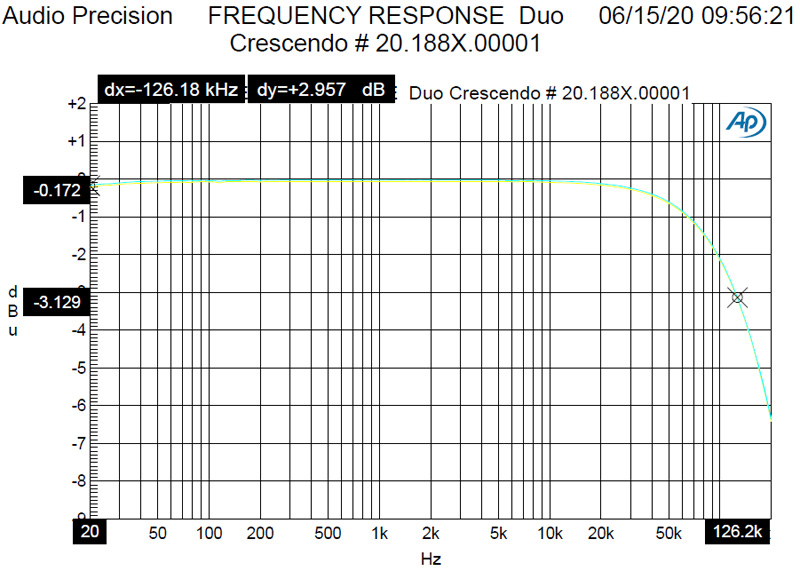
I have rarely seen such linearity in amplification over all frequencies from 20Hz up to 60kHz, with only a minute drop under 1dB!
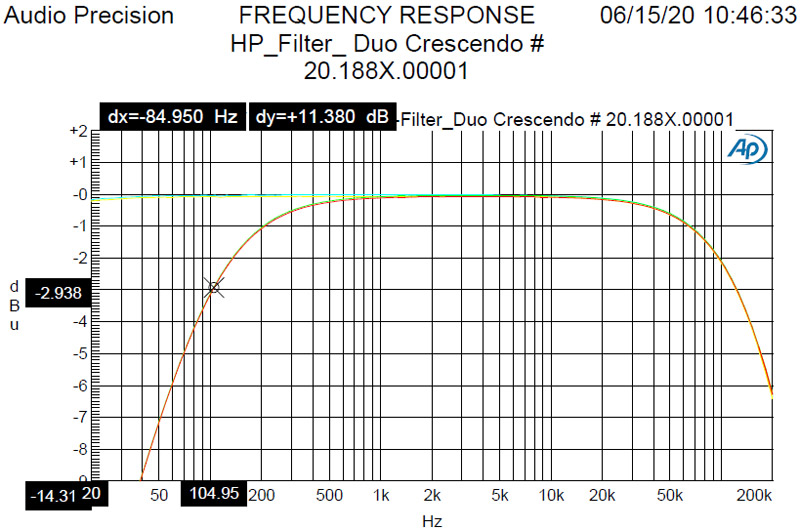
Engaging the low cut leads to a text-book drop off of -3dB at 100Hz (see above).
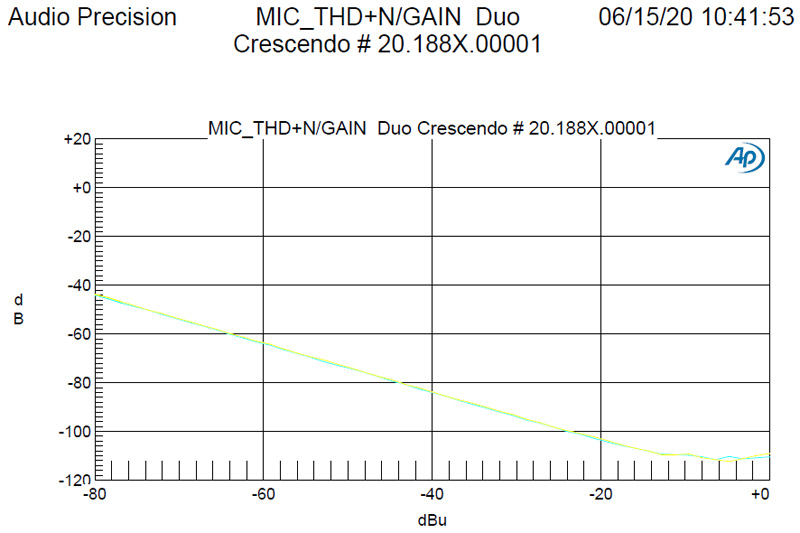
Here the plot of THD+N; exemplary as well (see above).
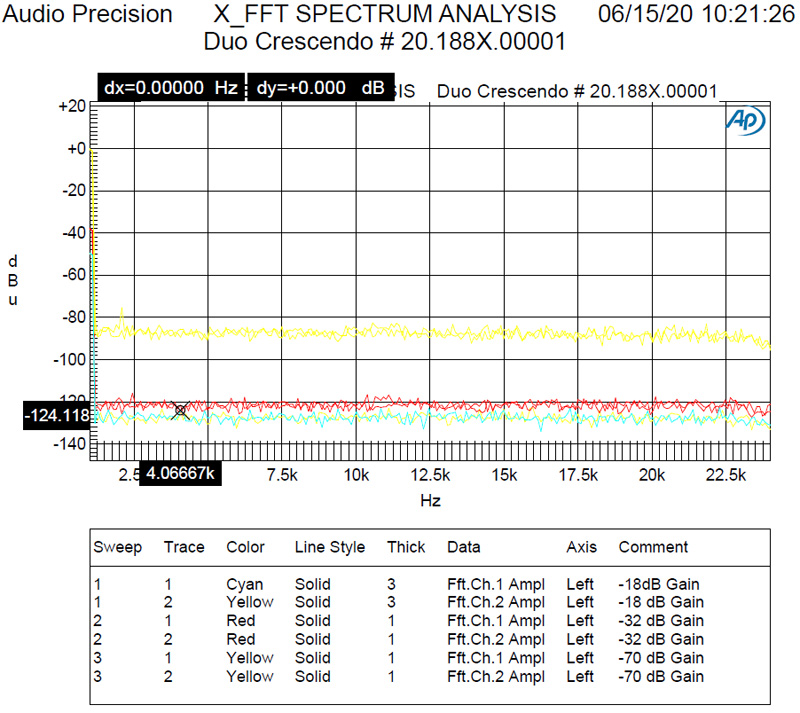
A noise level this low is a beauty to behold and impressive to not hear (see FFT analysis).
Bottom line
If I didn't already own a Crescendo it might well be the SPL Crescendo Duo. On the other hand if I set out with my rolling rack case anyway I rather have eight channels of this purity. The two channel version is a great option for producers on the lookout for one or two channels of optimal amplification. "Wire with gain" at it's best.
The Crescendo Duo can be had for about 2000 Euro either direct from SPL or from any well equipped pro audio specialist. I recommend testing it only when you have set aside the necessary funds as it will break your heart having to send this beauty back.
 How to resolve AdBlock issue?
How to resolve AdBlock issue? 

